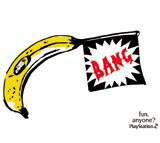MTV advises youth brands to soak up street culture

The way to teenagers’ hearts is through a bit of rough-and-ready street culture, if the latest edition of Switched On, a quarterly youth trends report published by MTV Networks Europe, is to be believed.
Young people can’t get enough of urban sounds such as garage rap, or grime, according to the report. Cholo style, born out of the Hispanic gangster culture of the US west coast, is on the rise.
And extreme entertainment, in the form of often violent, no-holds-barred video games, films and websites, is also proving popular.
Brands that earn their crusts from the youth sector are taking notice. ‘In general, there’s a trend towards brands tapping into these niche markets,’ says Switched On editor Claudine Ben-Zenou.
She points to Nike’s recent collaboration with graffiti artists Futura 2000 and Stash on limited-edition shoes, and Reebok’s Billionaire Boys Club and Ice Cream collections, both of which were co-developed by Japanese artist Nigo, of A Bathing Ape fame, and producer Pharrell Williams of The Neptunes.
Ben-Zenou says that if such brands want to ‘stay credible’ with their teenage market, they’ll follow this strategy. But has this affected designers working in the youth sector? Are their clients pushing for edgier design solutions?
Digit director Daljit Singh says it’s not so much client pressure as a recognition of what appeals to youths that often encourages ‘street’ styles. Last year, the group created Rizer.co.uk, a website that provides information and advice for young offenders.
‘To communicate with that audience, the visual language we used had to be on their level,’ says Singh. Digit presented a range of styles to the website’s focus group, but the one that received the best reception was based on club fliers.
‘They liked the associations with street culture,’ he says, adding that the Rizer site is therefore ‘highly illustrative, with a graffiti feel’.
Manchester group Love took a similar approach when it created packaging designs for Umbro earlier this year (DW 26 February). Tasked with making the brand ‘sexier’ and more appealing to 14- to 18-year-olds, it went with a ‘tag artist, spray graffiti look’.
Consultancy creative director David Palmer says this solution interests young men in their upper teens, but also appeals to their ‘aspirational’ younger brothers.
He isn’t concerned that Umbro’s appropriation of street style will create a backlash among its savvy target market. Rather, it is mainstream brands’ attempts to link up with members of underground scenes that create problems.
‘It’s like a betrayal to [that generation]; they smell a rat very quickly,’ says Palmer. He adds that brands are best served by being ‘up-front’, without trying to ‘bell and whistle everything’.
Dixonbaxi co-founder Simon Dixon agrees that it’s important that brands ‘don’t get too contrived’. This explains the consultancy’s direct approach to urban music channel MTV2’s identity in 2002 (DW 26 September 2002).
Idents such as one that states, ‘The following video has been classified B: Bad Lip Synching’, were taken straight from MTV chatroom discussions, he says.
Dixonbaxi is now working on a website for youth support network Youthnet, for which communications group Naked is conducting research.
Naked strategist Yusuf Chuku takes a long-term view of teenagers’ fascination with street culture. ‘It’s an ongoing thing. If you look at youth trends, they always start on the street. For instance, Mods and their smart suits were the same as ghetto fabulous: youths dressing up,’ he says.
Chuku is unimpressed with brands that try to up their cool quotient by drafting in graffiti artists or underground designers, however.
‘Brands don’t get a lot out of it unless they can show that they understand the culture. They must go to the grass roots,’ he asserts.
Chuku says Sony PlayStation is a mainstream brand that has successfully inveigled its way into a niche market and since basked in reflected glory.
A few years ago the company sent hundreds of snowboarders free game consoles. ‘Now, any time you read interviews with snowboarders, they’ll list PlayStation as their second most-important pastime,’ says Chuku.
‘Get the grass roots bit right, and you’ll succeed,’ he cautions. ‘Get it wrong, and kids will see right through it.’
-
Post a comment



